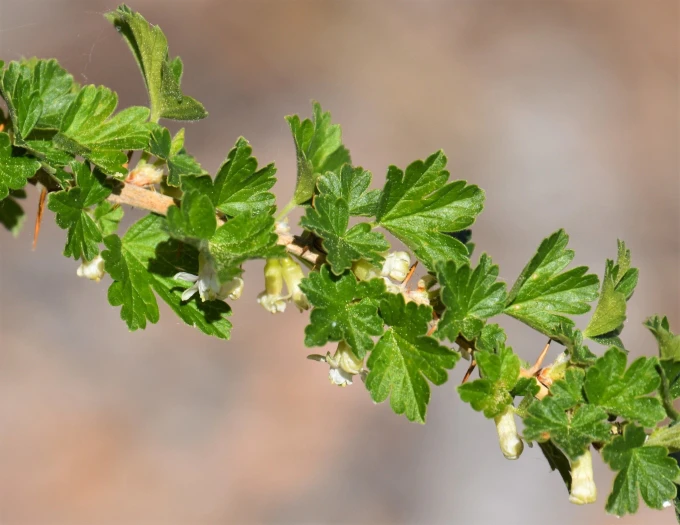Canadian Gooseberry
(Ribes oxyacanthoides)
Canadian Gooseberry (Ribes oxyacanthoides)
/
/

Eric Lamb
CC BY 4.0
Image By:
Eric Lamb
Recorded By:
Copyright:
CC BY 4.0
Copyright Notice:
Photo by: Eric Lamb | License Type: CC BY 4.0 | License URL: http://creativecommons.org/licenses/by/4.0/ | Rights Holder: Eric Lamb | Publisher: iNaturalist | Date Created: 2022-06-05T17:15-07:00 |

























Estimated Native Range
Climate Requirements for Myrtle Beach, South Carolina
| This Plant | Your Site | Plant Suitability for Your Location | ||
|---|---|---|---|---|
| • Precipitation | 8" - 68" | 53" | Aquatic | Aquatic |
| • High Temp. | 41°F - 92°F | 90°F | Your summer temperatures are normal for this plant. | Excellent |
| • Low Temp. | -28°F - 29°F | 36°F | OK, but your winter temperatures are warmer than normal for this plant | OK |
This plant may not grow well at your location - your precipitation is too high.
Summary
Ribes oxyacanthoides, commonly known as Canadian Gooseberry, is a deciduous shrub native to a variety of habitats including riparian zones, moist forest clearings, and the understory of boreal forests across North America, from Alaska through much of Canada to the western and north-central United States. It typically grows 20-60 inches tall and is characterized by its arching branches covered in prickles and sharp spines at the nodes. The shrub produces clusters of small, bell-shaped white or pinkish flowers in the spring, which are moderately showy and attract pollinators. The flowers give way to edible berries that can be reddish, greenish, purple, or black when ripe.
Canadian Gooseberry is valued for its wildlife benefits, as the berries provide food for animals such as grizzly bears and mule deer. It has historical significance as many Native American groups harvested the berries for food. In cultivation, it is used for naturalistic plantings and as a fruiting shrub in gardens. It prefers moist, well-drained soils and can tolerate a range of light conditions from full sun to partial shade. While it is not commonly afflicted by serious pests or diseases, it is an alternate host for white pine blister rust, which can be a concern in areas where white pines are valued. Gardeners should be aware of its spiny nature when considering placement and maintenance.CC BY-SA 4.0
Canadian Gooseberry is valued for its wildlife benefits, as the berries provide food for animals such as grizzly bears and mule deer. It has historical significance as many Native American groups harvested the berries for food. In cultivation, it is used for naturalistic plantings and as a fruiting shrub in gardens. It prefers moist, well-drained soils and can tolerate a range of light conditions from full sun to partial shade. While it is not commonly afflicted by serious pests or diseases, it is an alternate host for white pine blister rust, which can be a concern in areas where white pines are valued. Gardeners should be aware of its spiny nature when considering placement and maintenance.CC BY-SA 4.0
Plant Description
- Plant Type: Shrub
- Height: 2-6 feet
- Width: 2-6 feet
- Growth Rate: Moderate
- Flower Color: Green, Pink, White
- Flowering Season: Spring, Summer
- Leaf Retention: Deciduous
Growth Requirements
- Sun: Full Sun, Part Shade
- Water: Medium
- Drainage: Medium
Common Uses
Bird Garden, Edible*Disclaimer: Easyscape's listed plant edibility is for informational use. Always verify the safety and proper identification of any plant before consumption., Low Maintenance
Natural Habitat
Native to riparian zones, moist forest clearings, and the understory of boreal forests
Other Names
Common Names: Western Prickly Gooseberry, Prickly Berry, Northern Gooseberry, Canada Gooseberry, Bristly Wild Gooseberry, Wild Gooseberry
Scientific Names: Ribes oxyacanthoides, Grossularia purpusii, Ribes purpusii, Ribes rotundifolium, Ribes subvestitum
GBIF Accepted Name: Ribes oxyacanthoides